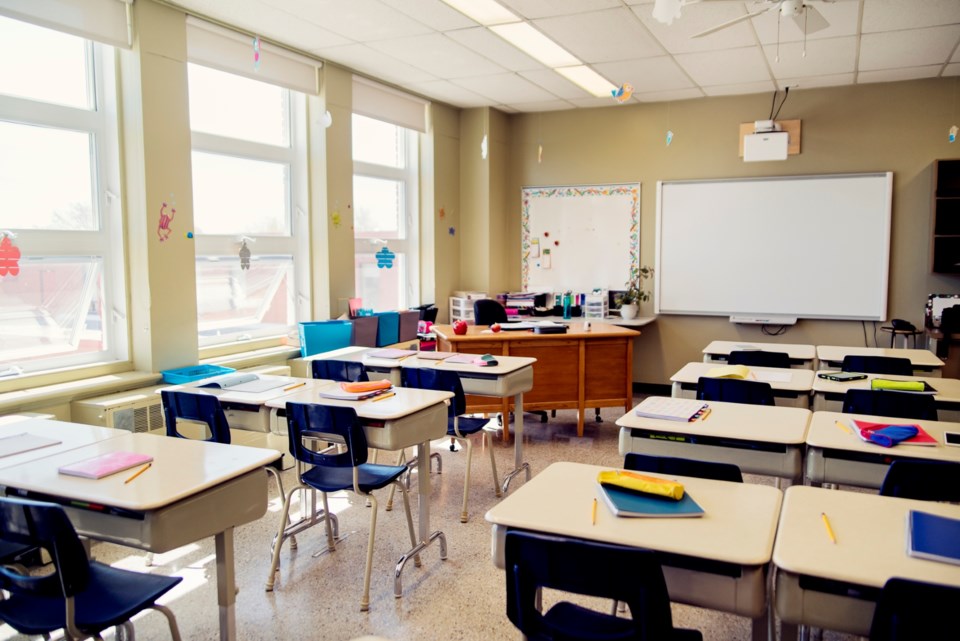The province of Quebec is short 8,500 teachers, its education minister said earlier this week.
A similar announcement in B.C. has not been made because no one is tracking those numbers here, B.C. Teachers’ Federation president Clint Johnston said in an interview.
“We've been asking (the education ministry) to, and we think that's a really essential thing, because anecdotally, I can tell you that it is a really severe shortage,” Johnston said.
He thinks the size of B.C.’s teacher shortfall could be similar to Quebec’s.
“I think it has to be in that ballpark, because we have the evidence, anecdotally from our members talking every day about how often their absences aren't filled. We saw last year Metro and Fraser Valley districts advertising for uncertified teachers,” Johnston said.
What the shortage often means, Johnston said, is that specialist teachers, like resource teachers who work with students with special needs, or teacher-librarians, get pulled from their regular duties and into classrooms to replace teachers who are ill.
“At the scale we're at now, students repeatedly missing lessons week after week, in those supportive roles, means they fall farther and farther behind. And that becomes really stressful,” Johnston said.
Rachna Singh, B.C.’s minister of education and child care, said her ministry has added close to 250 new spaces in teacher education programs and is reducing processing times for teacher certification so that more internationally trained teachers can work in B.C.
“As a parent I know how exciting the back-to-school week is, and how busy it can be for schools as enrollment numbers are finalized,” Singh said in a statement. “A tight labour market is a reality for many sectors throughout B.C., including in our K-12 education system, but no school districts have reported teacher shortages that would prevent them from welcoming students on the first day back.”
Her ministry said the teaching profession job vacancy rate, at 2.5 per cent, is lower than the overall provincial job vacancy rate at 4.9 per cent.
Districts hire teachers, so they probably have an idea of the shortfall numbers, but there are 60 districts in B.C. and the calculation is a bit more complex than simply counting vacant positions. It would need to include vacant positions as well as what a district needs to be fully staffed, including services for students with special needs, Johnston said.
The more information, the better, when it comes to making decisions about children’s futures. If a specific number could be pinned on the teacher shortfall in B.C., as has been done in Quebec, the effort should be made.
The teacher shortage exists across Canada and in other countries, Johnston said.
In B.C., it was magnified by their landmark 2016 Supreme Court win, which restored contract language for things like class size and class composition, but the shortage is also a reflection of the aging population and a global labour shortage.
Teachers got a decent raise in their last contract negotiations, but a recent survey of teachers showed that working conditions need improvement, Johnston said.
“About 80 per cent of our members said that they are feeling higher work demands more workload demands, and more stress and anxiety related to that this year 2022 than they were last year,” Johnston said.
That same survey found that teachers’ mental health was worse this year than last and 16 per cent said it was unlikely they would be teaching in two years’ time, which won’t help the shortage.
More needs to be done to interest people in teaching as a career, Johnston said.
“This isn't an easily solvable problem. We're not going to solve it by pulling people from other provinces or territories by the way, because they're short as well.” Johnston said. “We're going to solve it by making teaching a profession that people think is a desirable profession and one they know they can get into and not burn out in five years, but rather teach for 35 years and feel good about it and retire.”
Singh promised, in her statement, to “continue to work with education partners to find solutions and develop a strong, sustainable K-12 workforce now and into the future.”
That’s a promise that must be kept.
Teachers are a key labour sector that affects society’s future through our children. If there are not enough teachers, and many of those who are teaching say they’re going to quit, we should pay attention with as much information and action as possible.
The survey was held online between February 22 and March 12, with links emailed to a random sample of 13,053 of B.C.’s 39,558 teachers. Of those, 3,068 teachers completed the survey. The overall margin of error for the sample is plus or minus 1.7 per cent, 19 times out of 20.
Tracy Sherlock is a freelance journalist who writes about education and social issues. Read her blog or email her [email protected].



